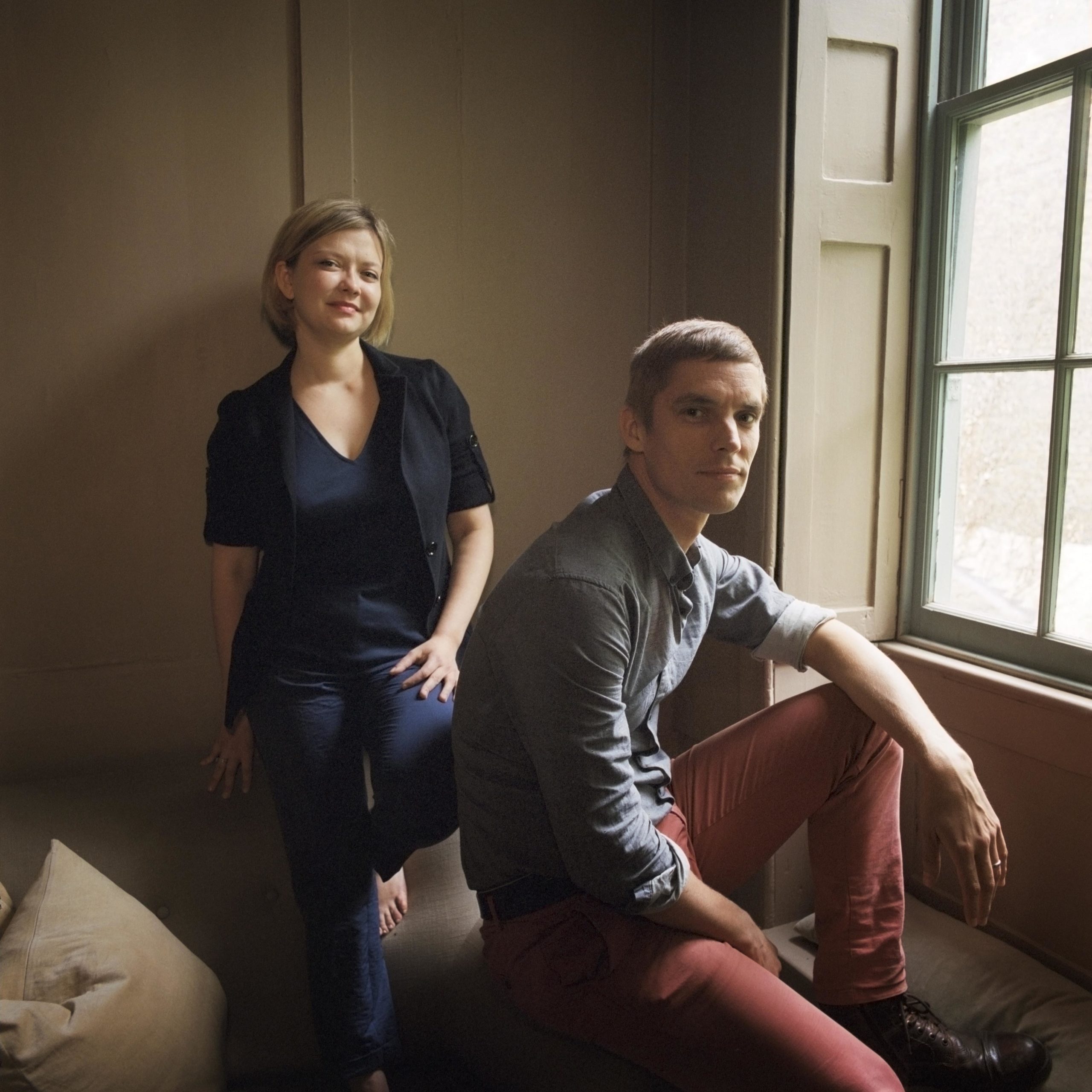By Lucy Caplan
Lucy Caplan is a Lecturer on History and Literature at Harvard University. In 2016 she received the Rubin Prize for Music Criticism.
Biography is compelling. The notion that we might understand a composer’s music more deeply by attending to the circumstances of their life is enticing, promising insight into the mysterious combination of factors that foster the creation of great art. Yet it’s worth asking some follow-up questions: What kind of music lends itself best to biographically grounded interpretation? How might knowing something about the person who composed a work nudge us to listen differently? Conversely, how do we avoid making overly neat assumptions, retrofitting what we hear to align with what we already know about the person who created it?
The three composers featured on this evening’s program prompt different ways of thinking about these queries. Schumann’s music is often interpreted through the lens of his mental illness; for example, some listeners presume that abrupt shifts in mood within a piece are meant to evoke his own fragmented psychological state. Mendelssohn is lauded as a child prodigy whose preternatural talents (and, perhaps, whose immaturity) can be heard in the virtuosic intricacy of his compositions. Webern’s music, interestingly, is less often interpreted through a biographical framework; his abstruse departures from conventional tonality are taken to be the product of his intellect, rather than the circumstances of his life. What, then, can biography help us hear, and what might it obscure?
Robert Schumann, Violin Sonata No. 1 in A Minor, Op. 105 (1851)
Schumann waited until middle age to write a violin sonata. A revered pianist whose performance career was cut short by a devastating injury, he spent most of his teens and twenties writing for solo piano; it was only later that he began writing in earnest for chamber ensembles and orchestras. In this sonata, one can hear ample evidence of his background as both a pianist and a composer for the piano. Throughout the piece, he treats the violin as a virtual extension of the piano: The two instruments share a register for most of the piece, with many of the violin’s melodies appearing first on its lower strings. This burnished tessitura perfectly suits the work’s evocative opening melody, marked to be played “with passionate expression.” The first movement unfolds in what is essentially sonata form, although Schumann blurs the boundaries between formal sections much as he blurs the boundaries between instrumental timbres.
The second movement is similarly pianistic in style, recalling the miniatures for the instrument that were one of Schumann’s specialties as a composer. A smiley opening phrase bobs up and down, and the tempo expands and compresses in line with the contours of the melody. Brief fantastical episodes are interpolated throughout the movement, transporting us briefly to other emotional worlds. In the sonata’s final movement, the violin and piano trade sixteenth-note passages back and forth, creating an agitated atmosphere that occasionally breaks free into more triumphant moments. The sonata ends close to where it began: A fragment of the first movement’s opening melody returns; the violin swoops back down to its low register; and the piece comes to a fittingly stormy close.
Felix Mendelssohn, Violin Sonata in F Minor, Op. 4 (1823)
Written when the composer was still in his early teens, this sonata speaks to Mendelssohn’s exceptional talents not just as a young composer, but also as a young violinist and pianist who appreciated the creative possibilities of both instruments. It was composed for one of his early teachers, the violinist Eduard Rietz, who was just a few years older than Mendelssohn but served as an important mentor to him. Although this work—like Mendelssohn’s two other violin sonatas and elusive D major violin concerto—has been largely eclipsed by his ultra-popular violin concerto in e minor, it offers fascinating insight into how he approached writing for the instrument in a more intimate context.
The rhapsodic solo passage that opens the sonata creates an atmosphere of somber elegance, which carries through the work as a whole. After the curtain rises, the violin and piano join forces for an elegant minor-key melody, which is balanced out by a lovely contrasting theme in A-flat major. In the second movement, the piano takes an introductory solo turn, setting the scene for the violin’s entrance with a melody whose sweetness betrays an undercurrent of sadness. Later, gently rocking triplets in the piano underlie the violin’s sustained, song-like line; there are flashes of pathos, but the players ultimately return to a peaceful mood. The final movement contains glimmers of the scherzo-like playfulness so characteristic of Mendelssohn’s music, without ever reaching a full-speed-ahead loss of abandon.
Anton Webern, Four Pieces for Violin and Piano, Op. 7 (1910)
The abstract, aphoristic quality of Webern’s Four Pieces resists easy interpretation. If Mendelssohn’s and Schumann’s more openhearted works invite us to imagine certain accompanying narratives rooted in their biographies, Webern’s music keeps listeners on their toes as it jumps from idea to idea. The extremely compressed time scale of the composer’s music only complicates matters. Each piece is over almost as soon as it begins, before there is time to determine what counts as its beginning, middle, or end.
Even if it is difficult to hear the details of Webern’s life in his music, he was, of course, just as much a product of his social and musical worlds as were his Romantic-era predecessors. As a child, he enjoyed a close friendship and intellectual companionship with a cousin, Ernst Diez, who became an important art historian. As a young composer, he became an incredibly dedicated student of Arnold Schoenberg; one scholar has described Webern’s opinion of Schoenberg as “an esteem the fervour of which at times resembled that of a love affair, at times, worship.” The Four Pieces for Violin and Piano date from 1910, about two years after his formal studies with Schoenberg concluded. The first of the pieces, a prelude of sorts, is slow, hushed, and mysterious, never rising above a pianissimo dynamic. The second goes to opposite extremes: loud, extroverted, and full of fast-paced figures. The third maintains an enigmatic, eerie opacity, while the fourth takes on a more declamatory and assertive tone.
Robert Schumann, Violin Sonata No. 2 in D Minor, Op. 121 (1851)
Written just months after his first violin sonata, Schumann’s second work in the genre matches its counterpart in terms of emotional intensity and impassioned character. Yet it is a more expansive work in length and style, traversing a wider expressive range across its four movements. The first movement begins with a series of declamatory d-minor chords before moving into a stormy exposition. It teems with half-finished thoughts and wandering melodic figures, as if unable to settle on a principal idea. A more unified sensibility appears in the second movement, a scherzo. Beginning in b minor, it increases in brightness en route to an exultant triumphant major-key finish. The third movement opens with charming pizzicato chords in the violin, creating a spare, even rustic ambience. As the violin moves into a beautifully unadorned bowed melody, the two instruments separate more fully from one another, each taking on a distinct role during the variations that follow. The sonata’s final movement is pervaded by a nervous, kinetic energy. There is some respite in its sunnier second theme, although its underlying agitation never fully dissipates.
The sonata won the praises of its first performers. The violinist Joseph Joachim, who first performed the work with the composer and pianist Clara Schumann (to whom Robert was married), wrote, “It overflows with noble passion, almost harsh and bitter in expression, and the last movement reminds one of the sea with its glorious waves of sound.” This idea of “overflowing,” in fact, aptly describes both of Schumann’s sonatas; they seem to be bursting at the seams with feeling, pushing against the structural constraints of sonata form in an effort to achieve their maximum expressive potential.





